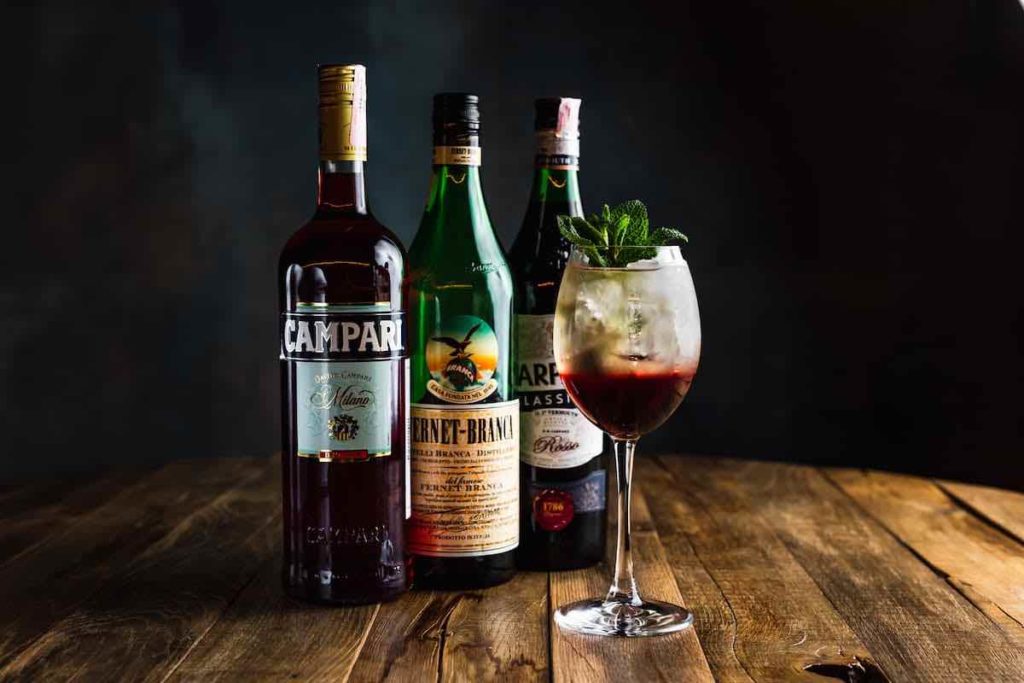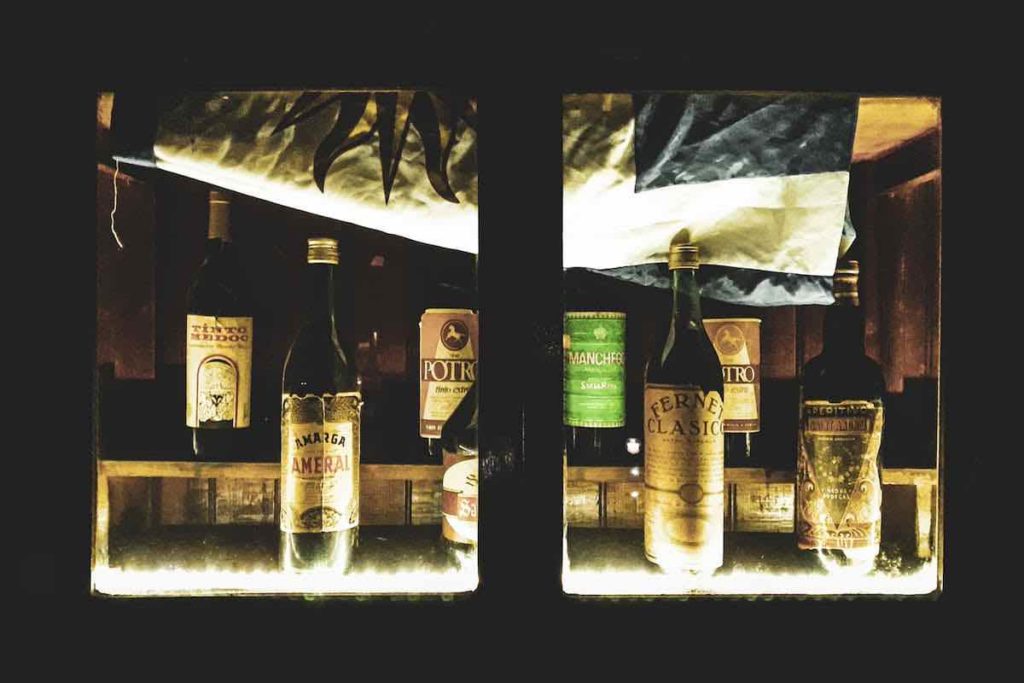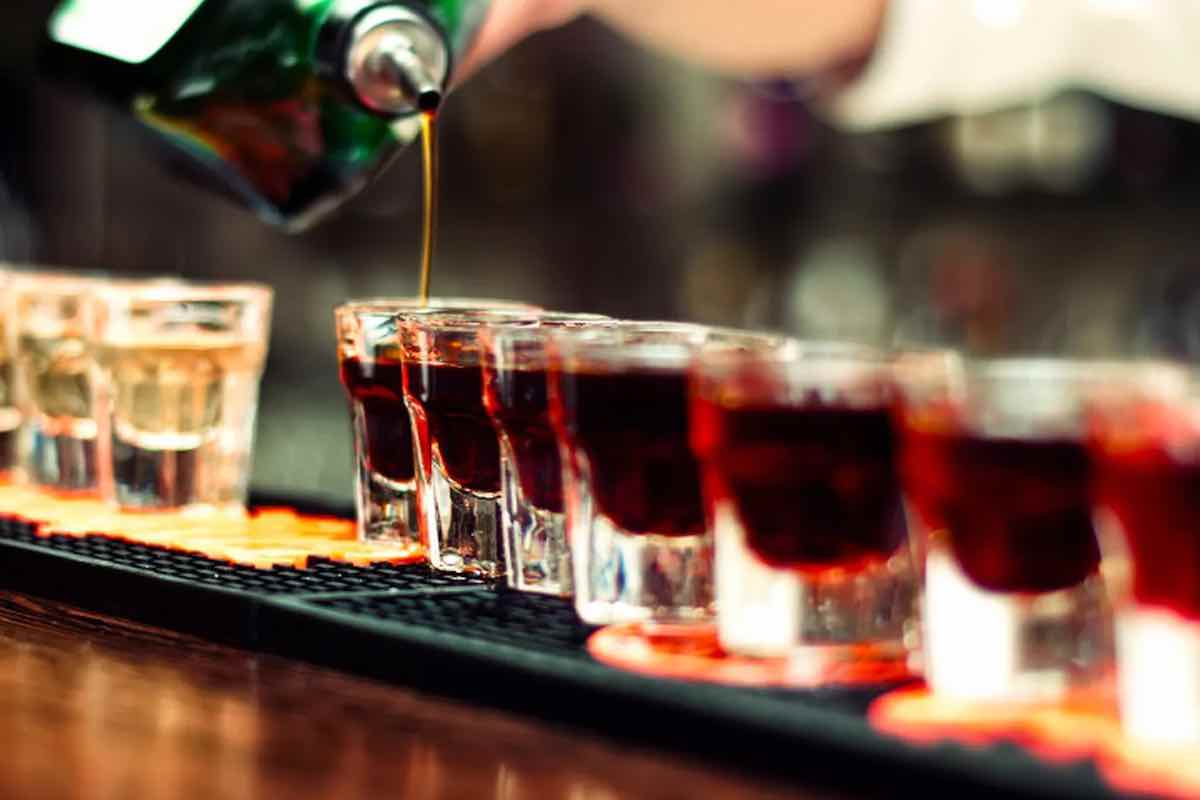The simplest definition for amaro might be “the category of bitter Italian liqueurs,” but of course nothing is ever that simple. A wide categorization would include traditional brands like Averna, Braulio, Cynar, Lucano, Meletti, Montenegro, Nardini, Nonino, and Zucca; Fernet-Branca and other fernets; lighter aperitif liqueurs like Campari and Aperol; and international bitter liqueurs like Becherovka, Suze, and Zwack. We might say that amari (the plural of “amaro”) are bitter liqueurs originally from Italy and made anywhere today.
Medicinal vs. Potable Bitters
The Oxford Companion to Spirits and Cocktails splits bitters into essentially two categories. The first are formerly-medicinal, concentrated bitters like Angostura and Peychaud’s. These were first advertised as strictly medicinal (Angostura Bitters were cited as being useful for all kinds of stomach complaints including seasickness), and when they came to be used in cocktails, it was only in drops and dashes. They still are. Also included in this category are patent medicines like Lydia Pinkham’s Vegetable Compound and Stanley’s Snake Oil; purported cure-all medicines that were usually bitter herbs infused into high proof alcohol. Most patent medicines are no longer produced, as they do not, in fact, cure all.
The other category of bitters are potable (drinkable) bitters, which can include Italian ones like Campari and Fernet-Branca along with potable bitters from other countries, such as Jägermeister and Malort. Some people might claim that amaro only includes the Italian ones; others claim all brands of potable bitters are amari. That’s the way I lean.

Common Ingredients in Amaro
The bitterness in these liqueurs comes from a variety of botanicals. The most popular are gentian, wormwood, rhubarb, and cinchona bark, but the options are endless and can include angelica, artichoke leaves, cherry bark, chamomile, etc. Gentian is the backbone of most non-potable bitters including Angostura, but gentian is also found in the majority of amari. The botanical was known for millennia as a treatment for digestive issues. Wormwood is famously used in absinthe and vermouth, but also adds bitterness to many amari. Grand wormwood was used to expel intestinal parasites, and other forms of wormwood (including mugwort and small/Roman wormwood) were employed for a host of other medicinal uses.
Rhubarb, often known as Chinese or Turkish rhubarb, is used in many potable bitters. Only the root, not the stems as in rhubarb pie, is used to flavor these beverages; it is typically sold dried and has an intense yellow color. It has a smoky, earthy, mustard-like taste and it was used as a laxative in traditional Chinese medicine. Cinchona tree bark was used as far back as the early 1600s to treat malaria and fevers. Quinine, extracted from cinchona bark, is used to give tonic water its bitter bite. We might think of quinine exclusively as a treatment for malaria today, but in the 1800s it was really considered good for everything, sort of like how electrolytes or antioxidants are in present times.
Amaro’s Early Uses
Most amari include in their recipes a combination of some of these bitter botanicals, along with others for flavoring, usually sugar to counteract the bitterness, and caramel coloring to make them brown. Many of the brands still on the market today were formulated in the middle of the 1800s in Italy, a time when much of the country was rife with malaria, and refrigeration was a long way off. These drinkable bitters performed several functions: they were taken a spoonful at a time like daily vitamins for general good health. They would be used to soothe any sort of minor conditions like stomach upset, colds, and fever. And they were consumed as aperitifs and digestifs to prepare one for or to recover from a big meal.

In Brad Thomas Parson’s book Amaro, the author writes that many amari were first made in monastic apothecaries as medicinal health tonics, but later became a secular commercial brands. He writes, “After World War II, amaro had transitioned from a prescriptive aid sold by pharmacists or localized homemade versions to a commercial product purchased and consumed for pleasure.”
The range of the amaro category is extensive. Amari may be exceedingly bitter or syrupy sweet, as high proof as 40 percent alcohol by volume like other base spirits, or less than 20 percent ABV and meant to be diluted further with soda water. Some people would claim that these lighter aperitif style bitters like Aperol and Campari aren’t really amaro, and further that extremely low-or-no-sugar bitter digestifs like Fernet-Branca deserve their own separate category. And then there is the non-Italian amaro question. We might be tempted to simply call all of these possible-amari “potable bitters” if the expression didn’t sound so unappetizing.



